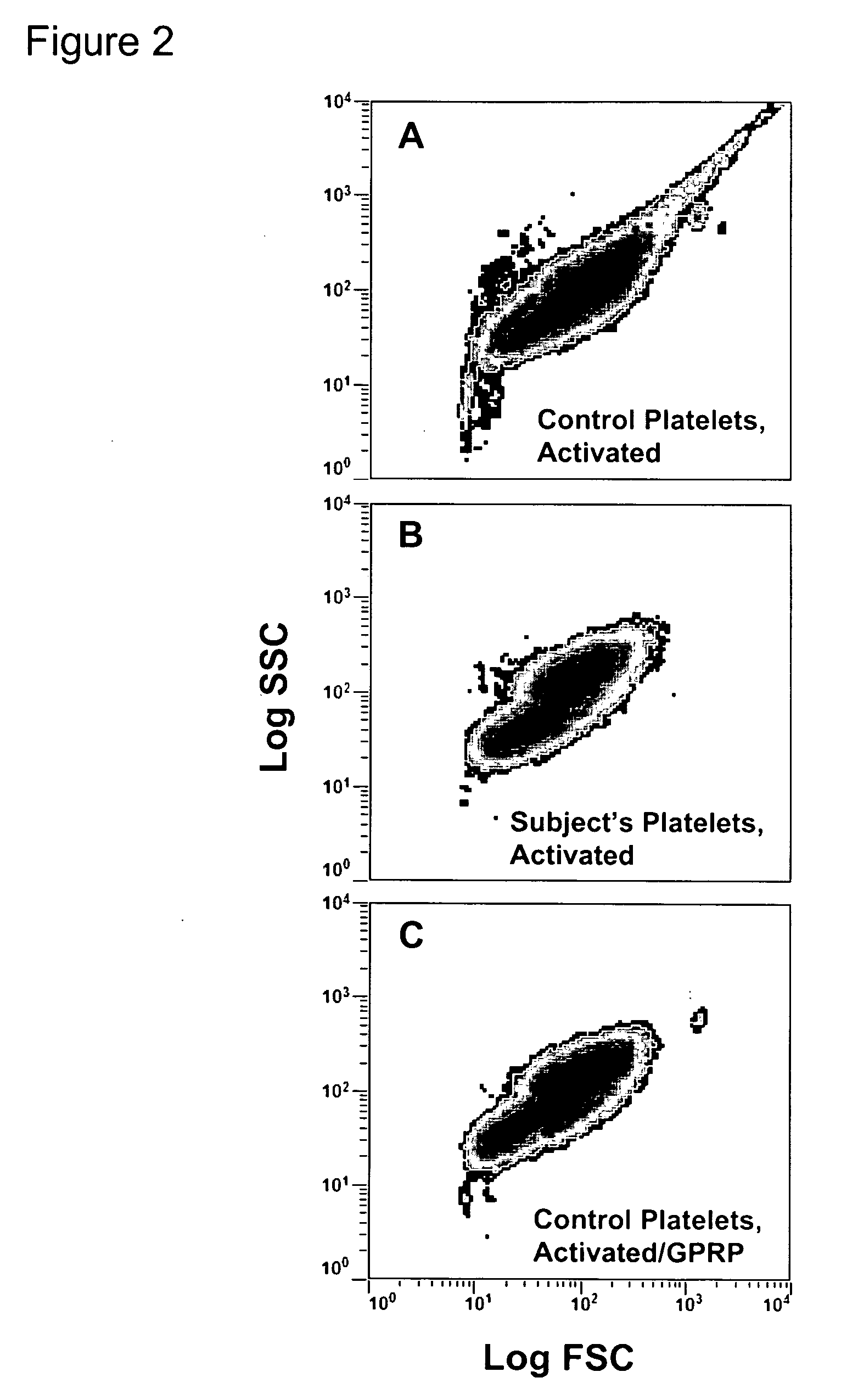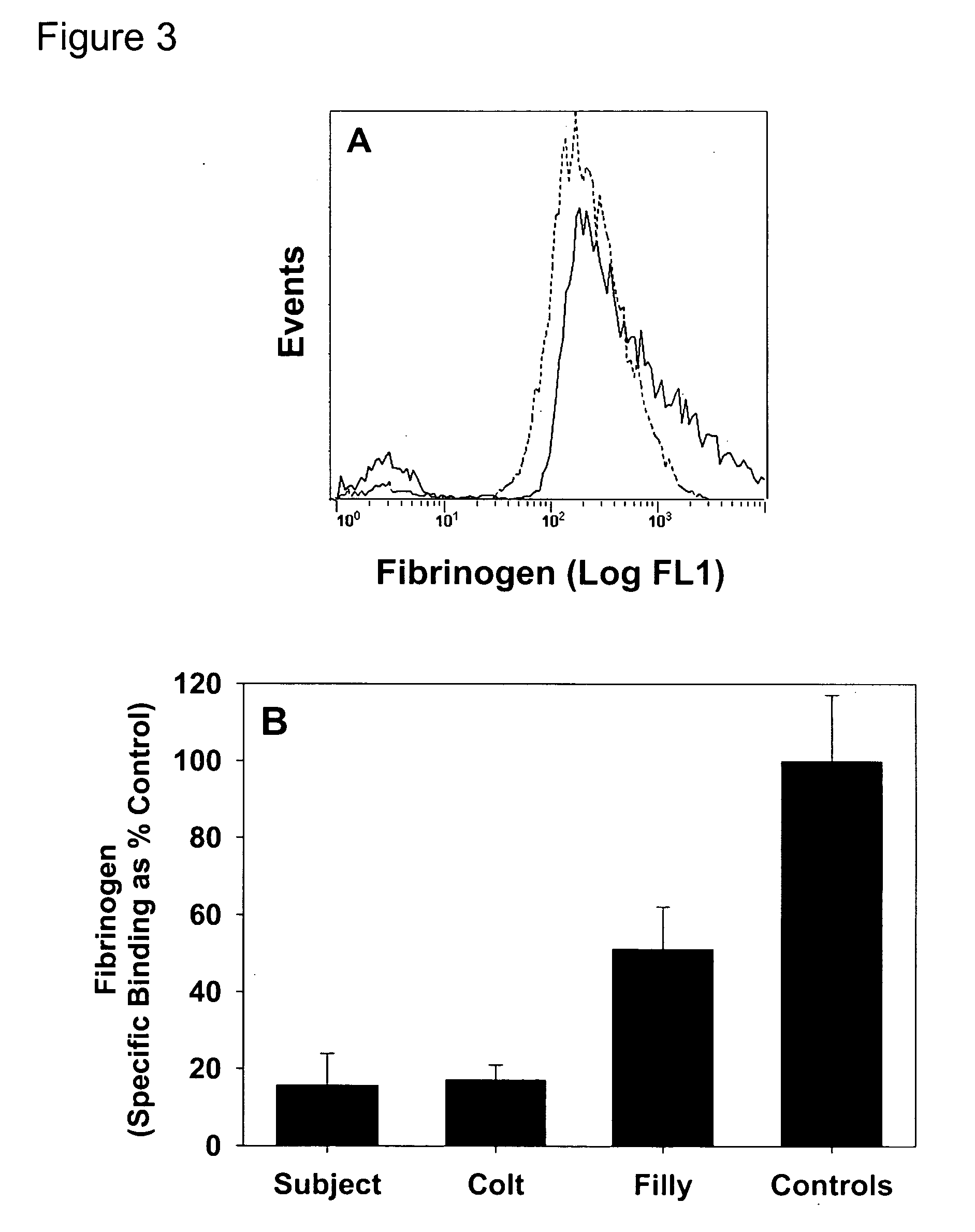Thrombin-induced fibrinogen binding for the detection of risk of bleeding disorders
a technology of fibrinogen binding and thrombin, which is applied in the field of thrombin-induced fibrinogen binding for the detection of can solve the problems of unremarkable response of the subject's prp to other agonists and no method to readily diagnose the disorder in other horses, so as to reduce the aggregation of washed platelets, reduce and increase the risk of bleeding disorders
- Summary
- Abstract
- Description
- Claims
- Application Information
AI Technical Summary
Benefits of technology
Problems solved by technology
Method used
Image
Examples
example 1
Characterization of a Bleeding Defect in a Thoroughbred Horse
[0037] Platelet reactivity was evaluated in a horse that has a bleeding defect. Washed platelets from the subject, offspring, and control horses were examined for the establishment of a phosphatidylserine (PS)-rich outer leaflet of the platelet membrane, the generation of thrombin, and the binding of fibrinogen in response to activation with thrombin.
[0038] An important prerequisite step in the common pathway involves the response of platelets to an increase in intracellular calcium by translocating PS from the inner to the outer leaflet of the platelet plasma membrane. Calcium mobilization was the same in platelets from controls and the subject mare (data not shown). This PS-rich outer membrane forms the foundation for the procoagulant surface and is required for normal assembly of prothrombinase (Dachary-Prigent, et al., Blood 81:2554-2565, 1993; Sims, et al., J Biol Chem 264:17049-17057, 1989). FITC-labeled annexin-V ...
example 2
Screening of a Horse Population for the Presence of the Bleeding Defect
[0052] A horse population of 446 animals was evaluated for the presence of the bleeding defect described in Example 1. Blood samples were collected into ACD-A vacutainer tubes and transported to the laboratory within 48 hrs at ambient temperature, which varied between 1 and 52° C. Platelets were prepared and washed as described in the Materials and Methods section for Example 1.
[0053] Fibrinogen binding was assessed in response to thrombin. Washed platelets (5×107 cells / ml) in Tyrode's-HEPES buffer plus 2 mM CaCl2 were incubated with labeled fibrinogen (3 μg / ml) for one minute at room temperature (25° C.) prior to activation. Platelets were activated with 0.1 U / ml thrombin and evaluated by flow cytometry after a 30 min incubation at 37° C. All data were collected with an FC500 flow cytometer. Forward and side scatter voltages were set to detect machine noise, which was removed during subsequent analyses.
[0054]...
PUM
 Login to View More
Login to View More Abstract
Description
Claims
Application Information
 Login to View More
Login to View More - R&D
- Intellectual Property
- Life Sciences
- Materials
- Tech Scout
- Unparalleled Data Quality
- Higher Quality Content
- 60% Fewer Hallucinations
Browse by: Latest US Patents, China's latest patents, Technical Efficacy Thesaurus, Application Domain, Technology Topic, Popular Technical Reports.
© 2025 PatSnap. All rights reserved.Legal|Privacy policy|Modern Slavery Act Transparency Statement|Sitemap|About US| Contact US: help@patsnap.com



